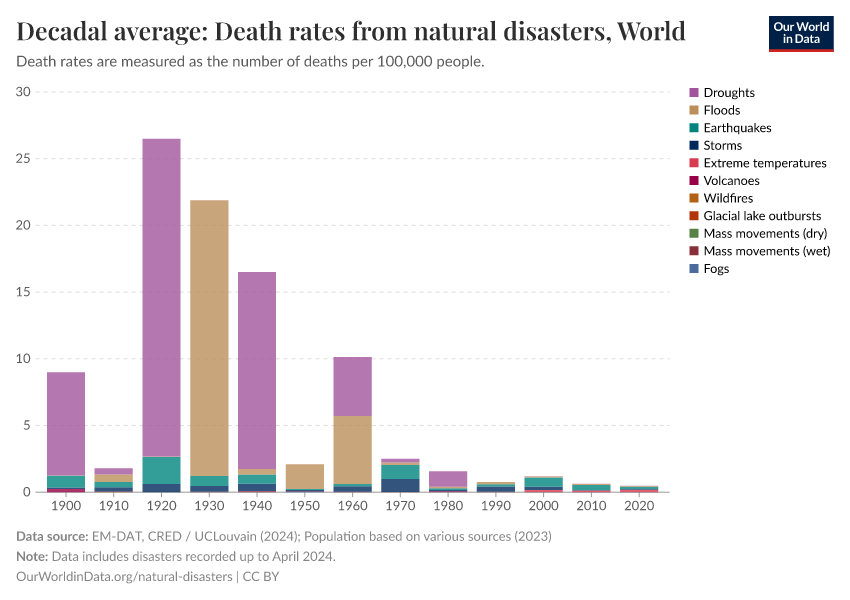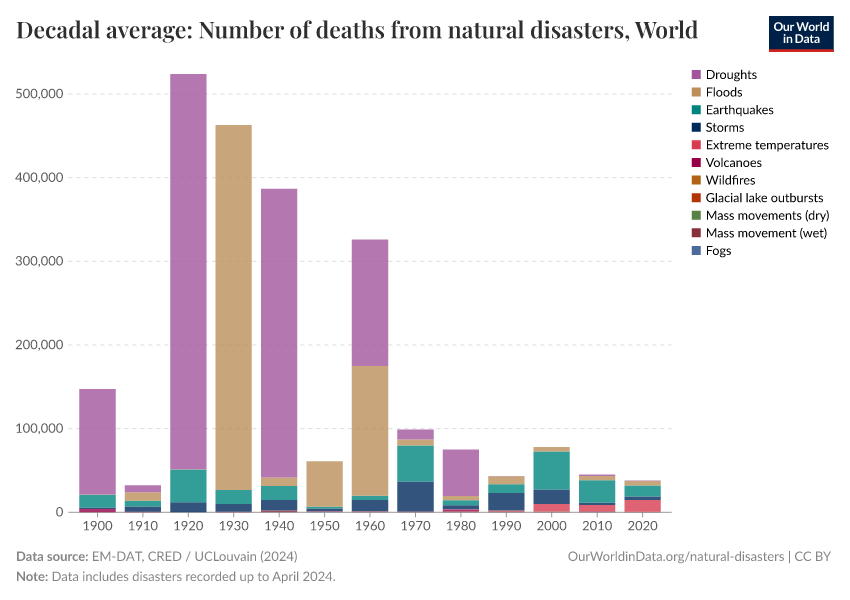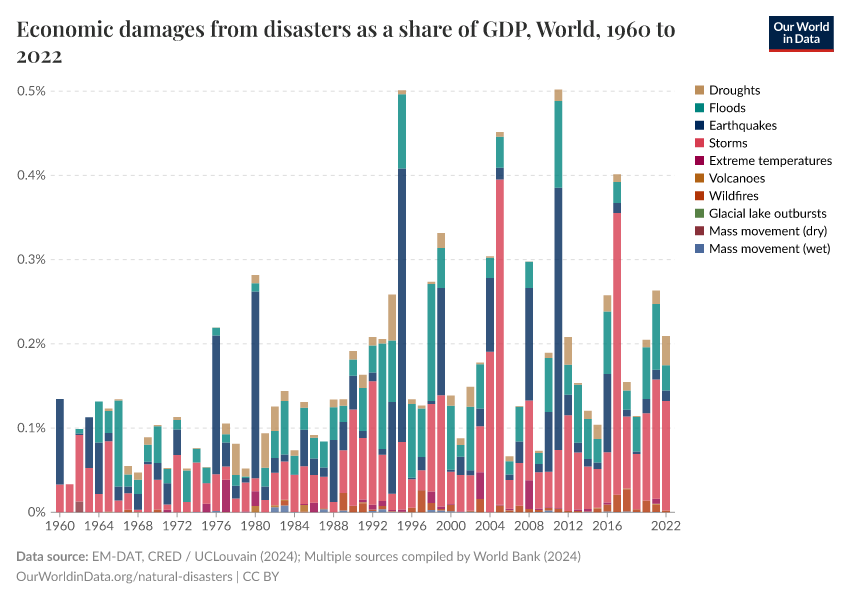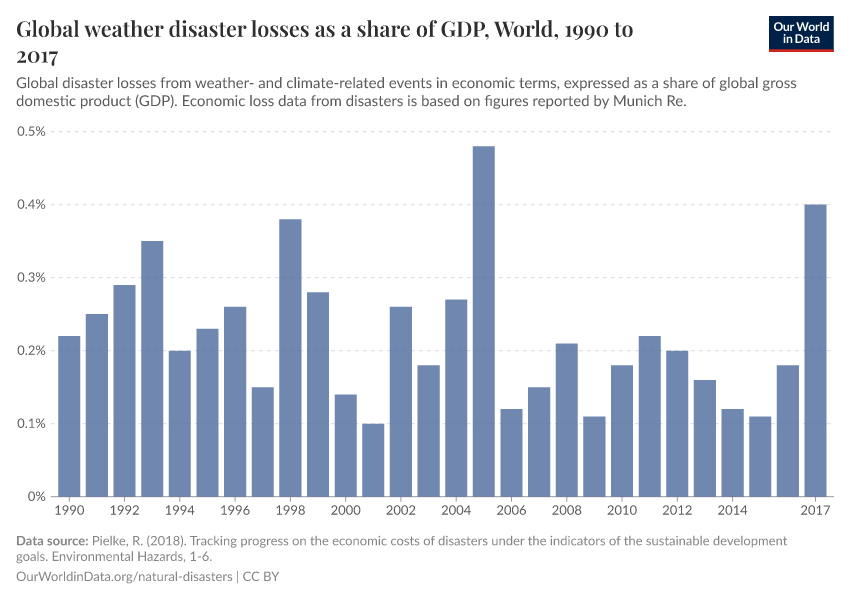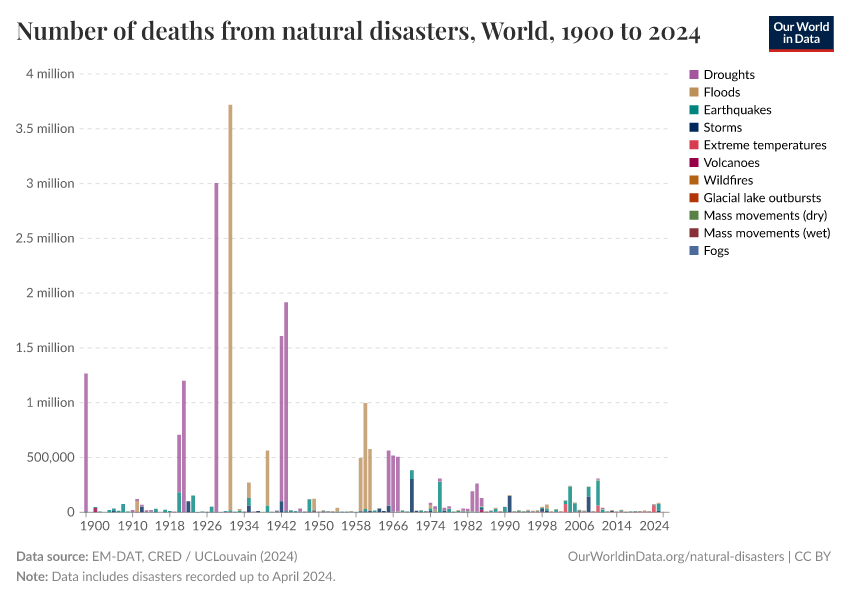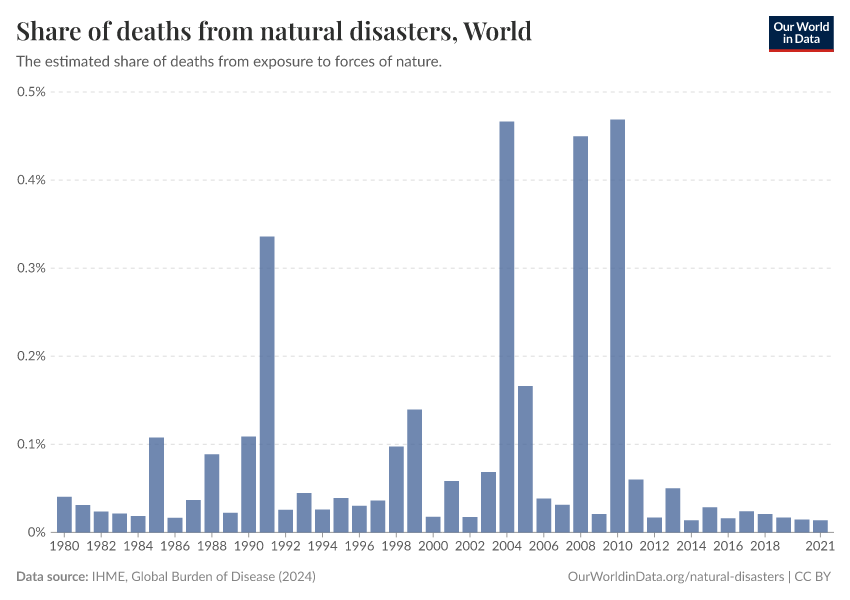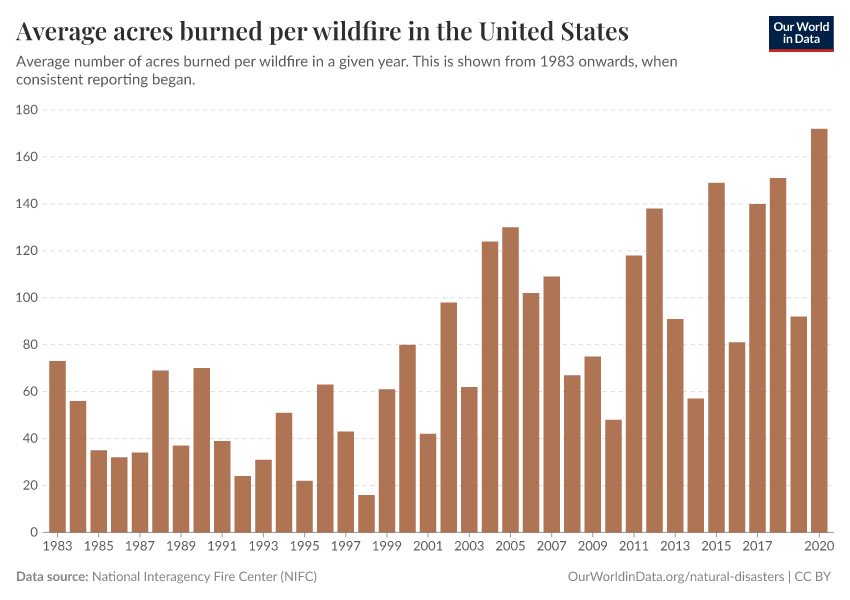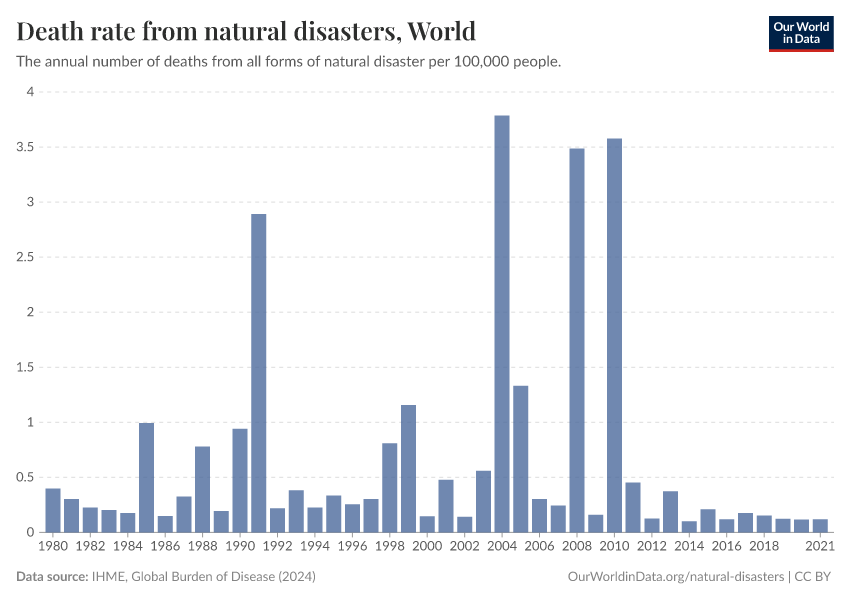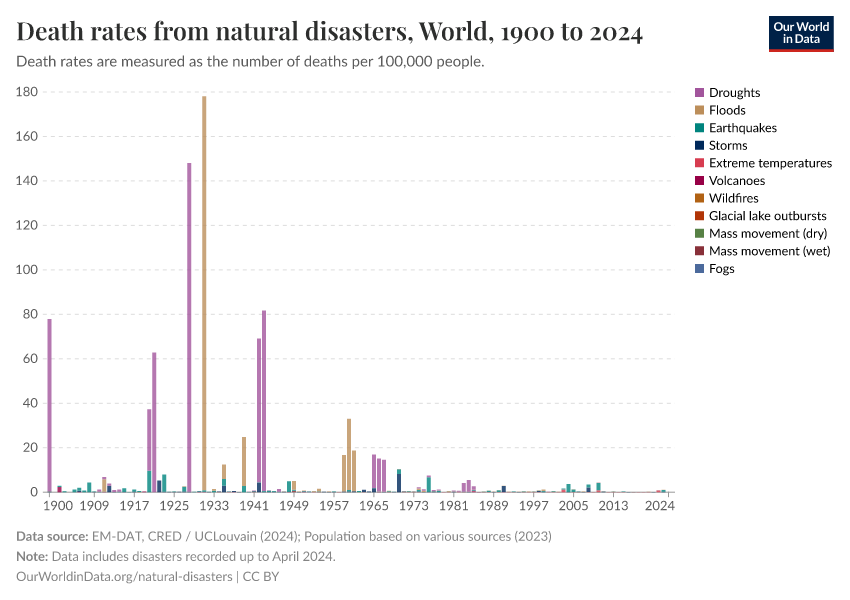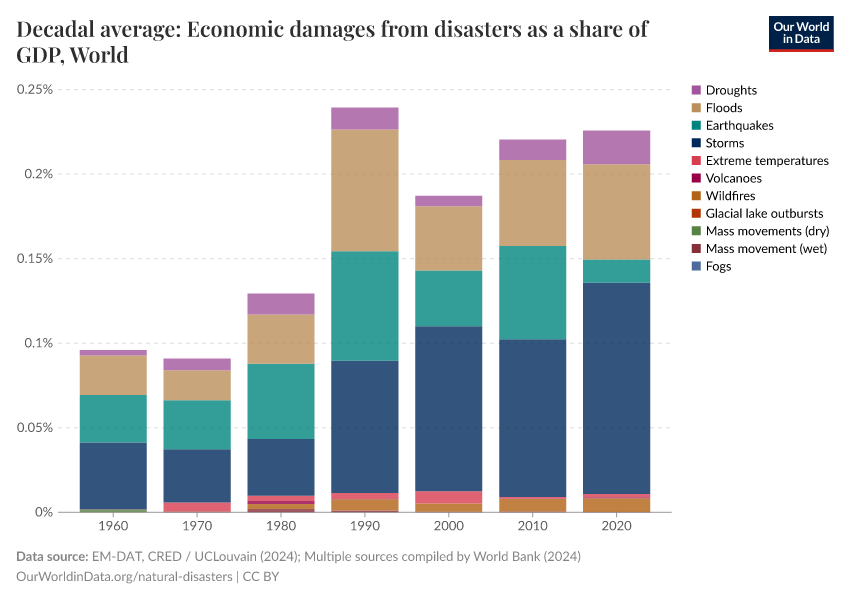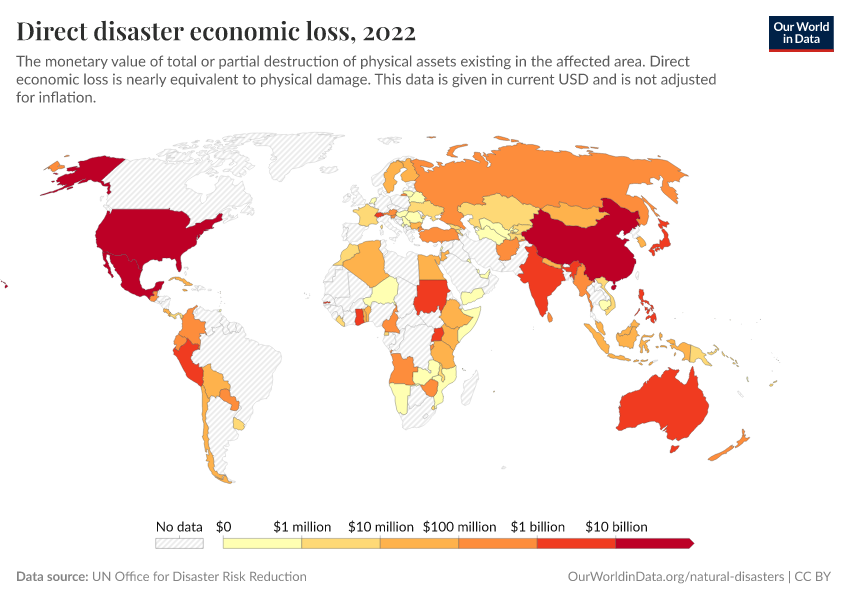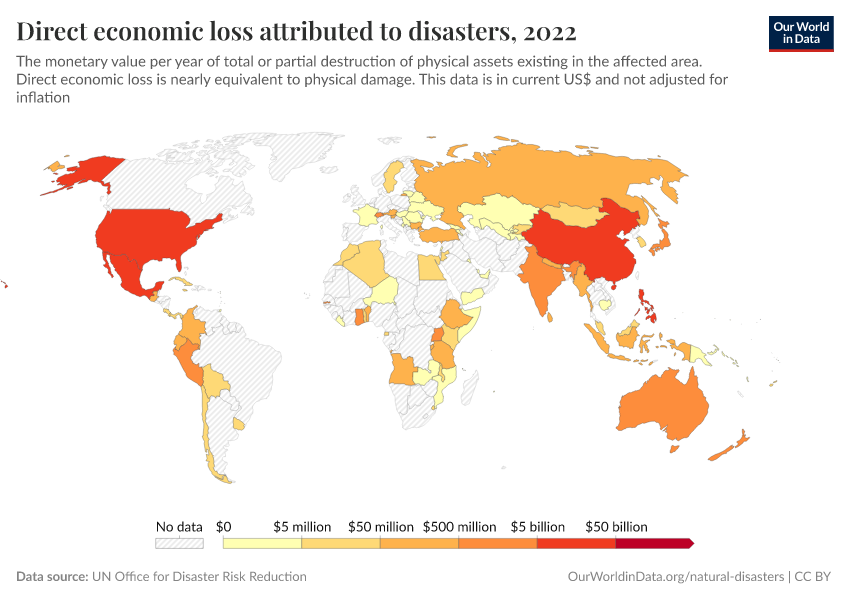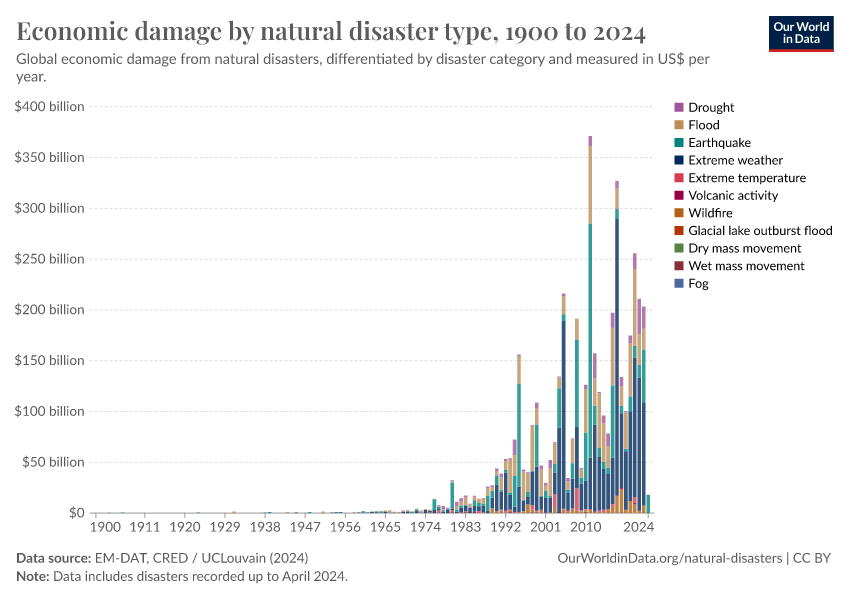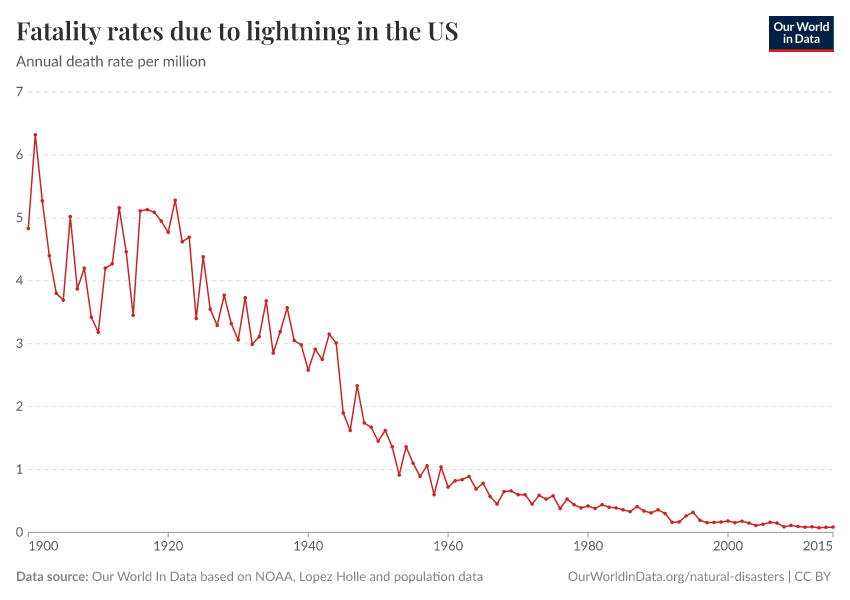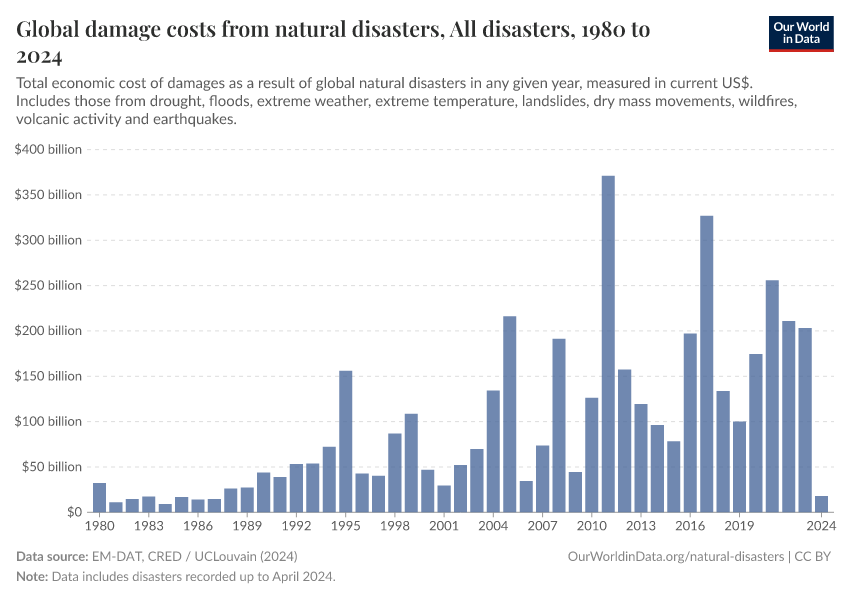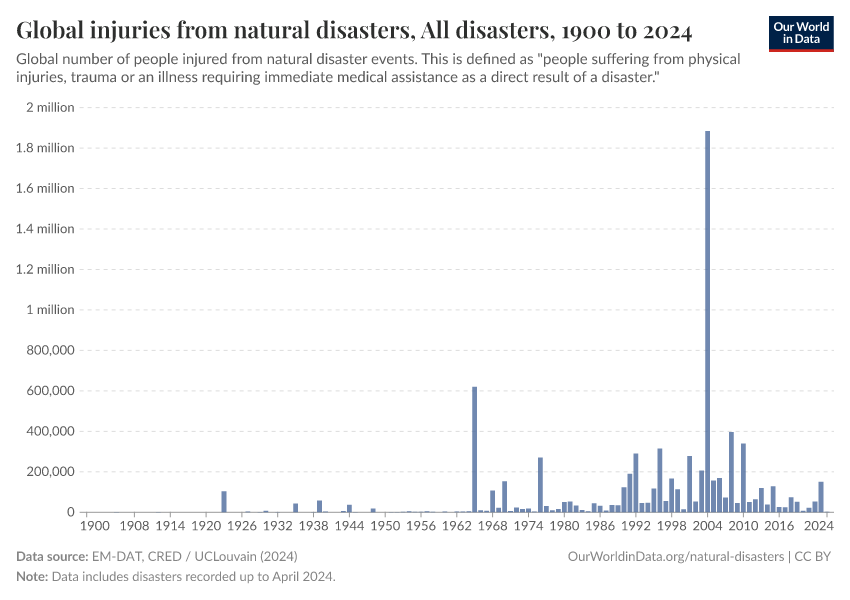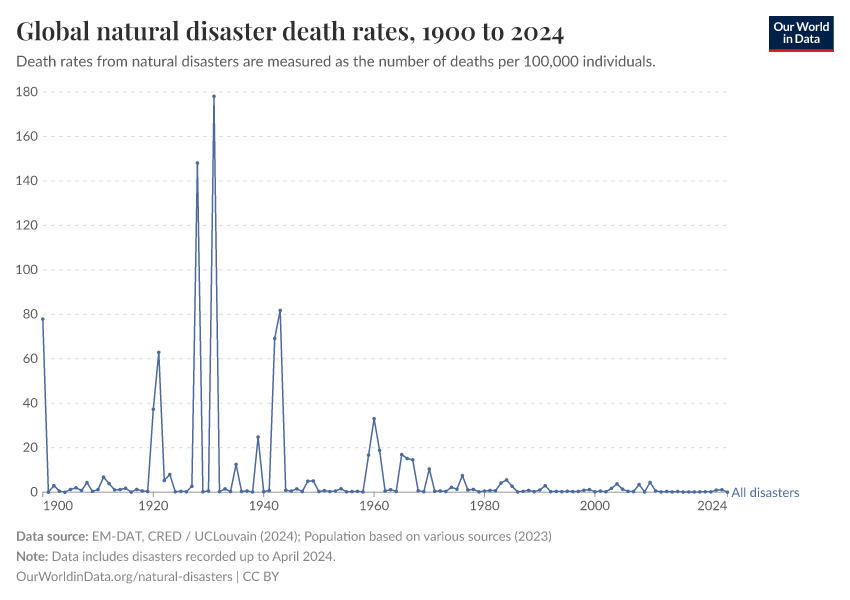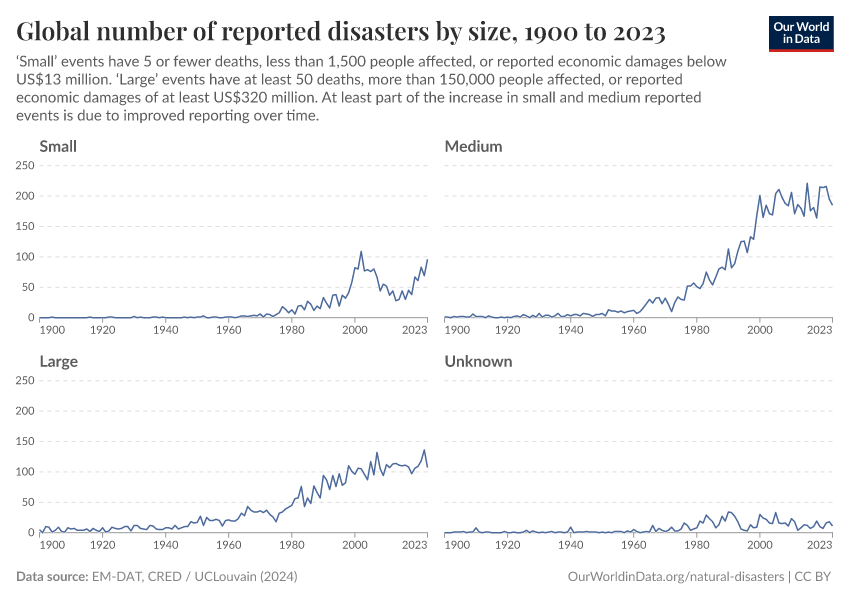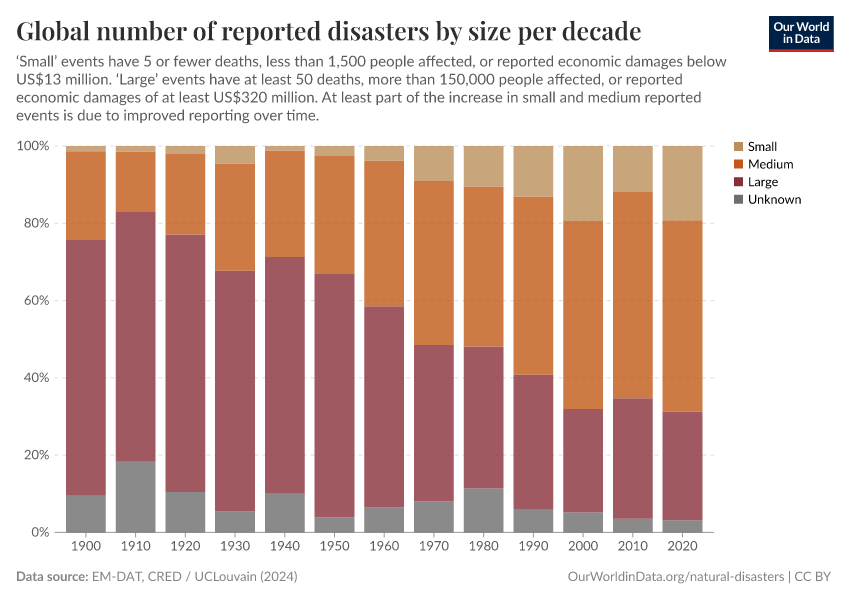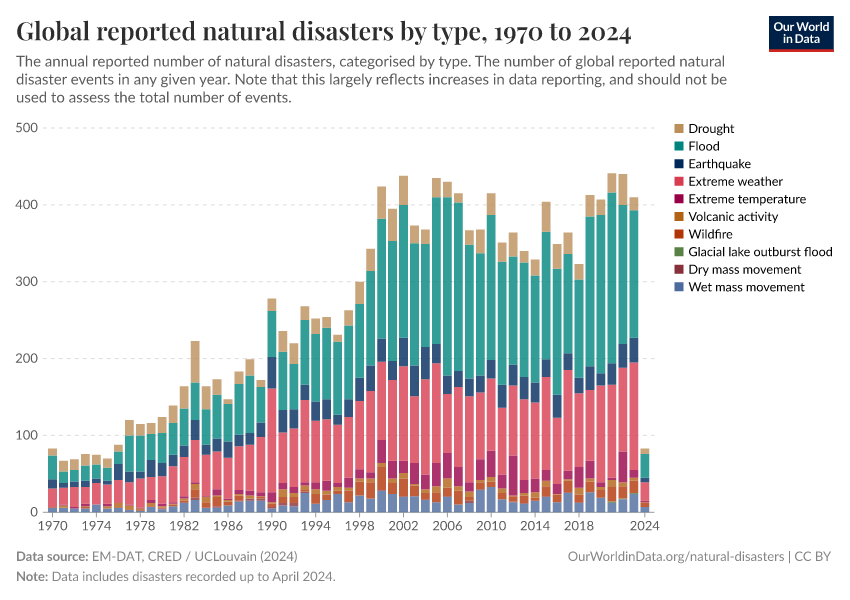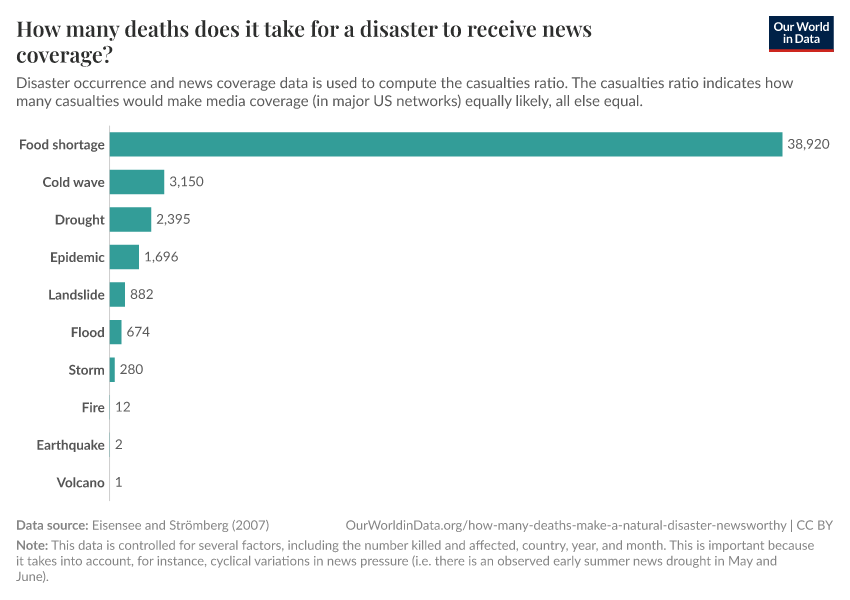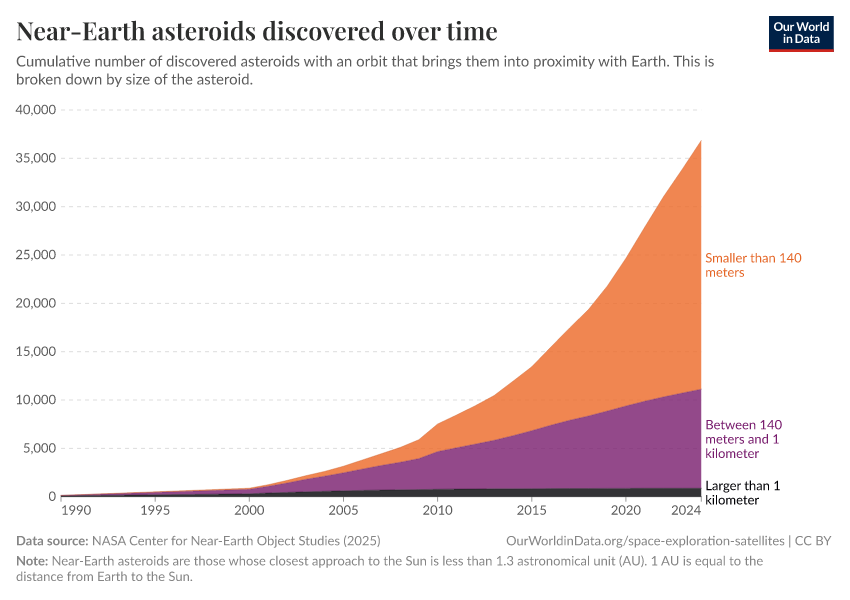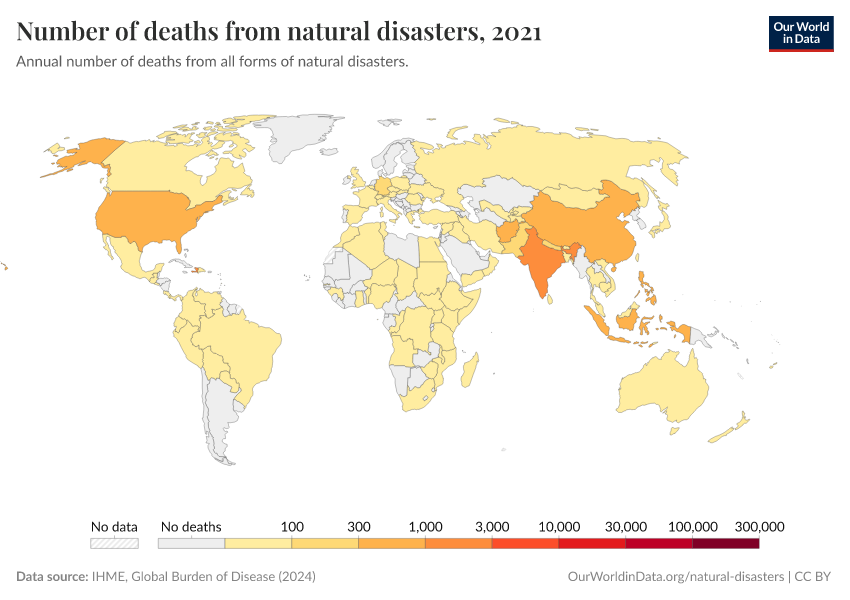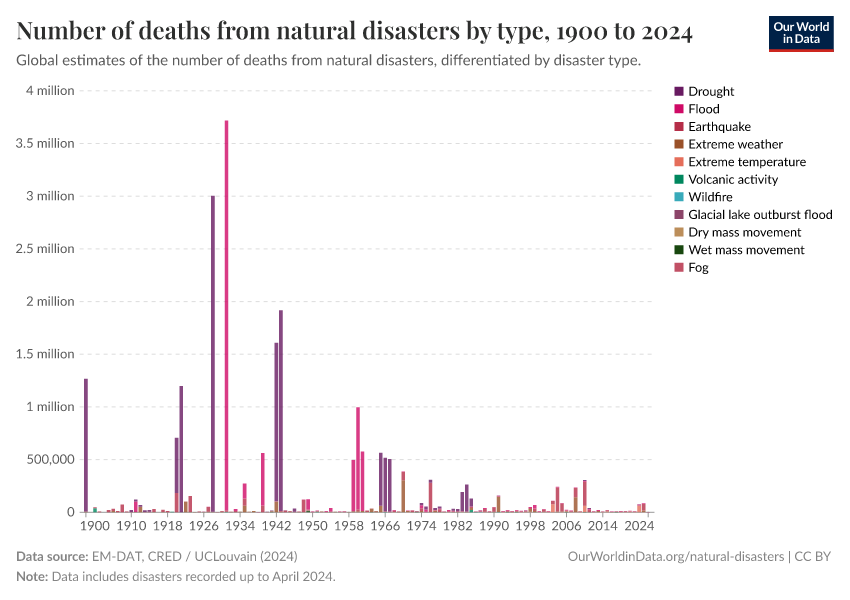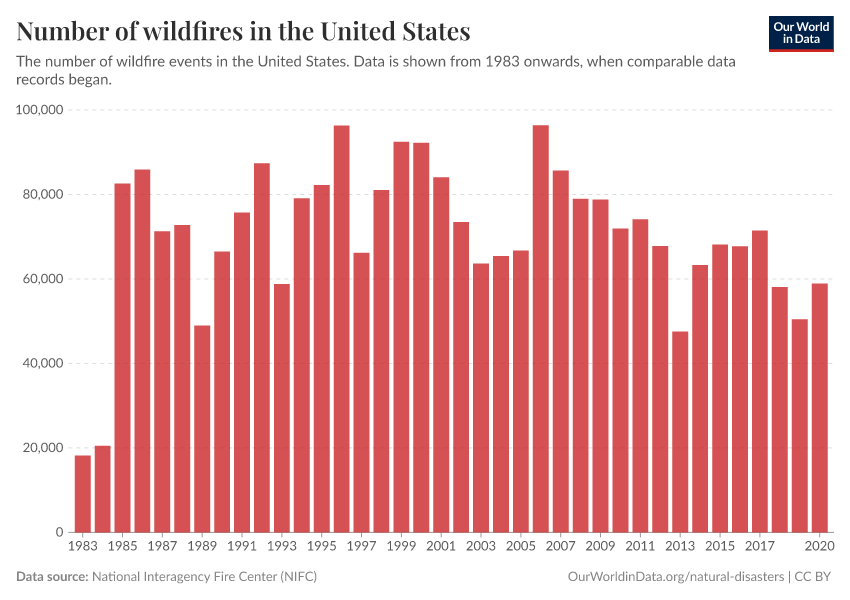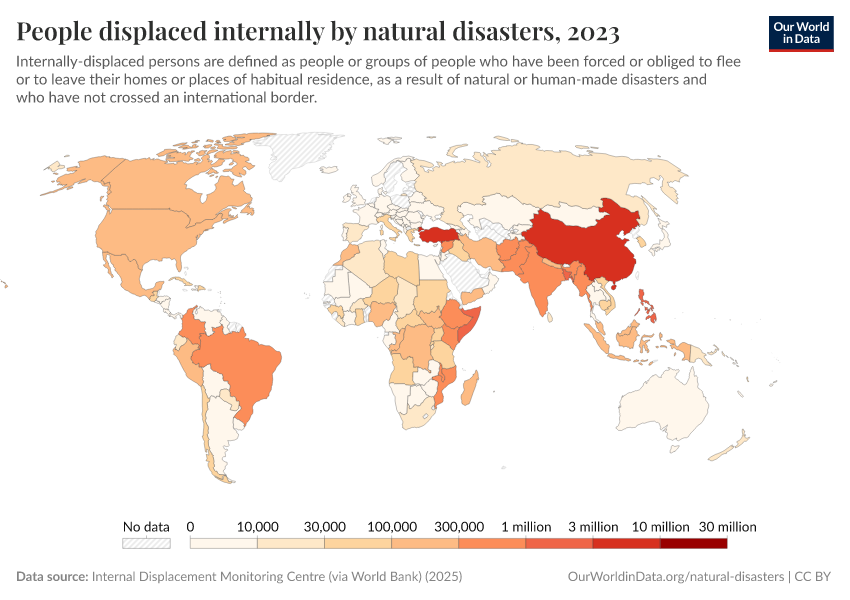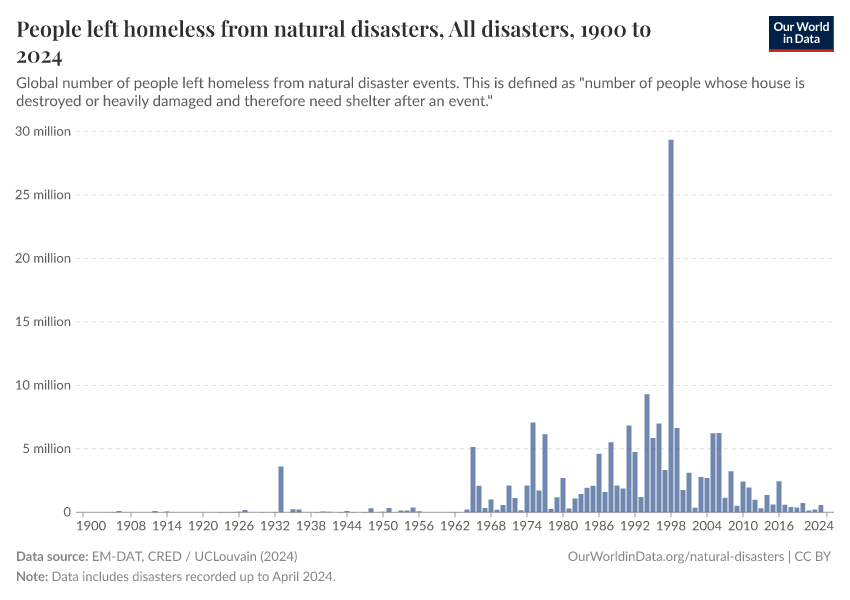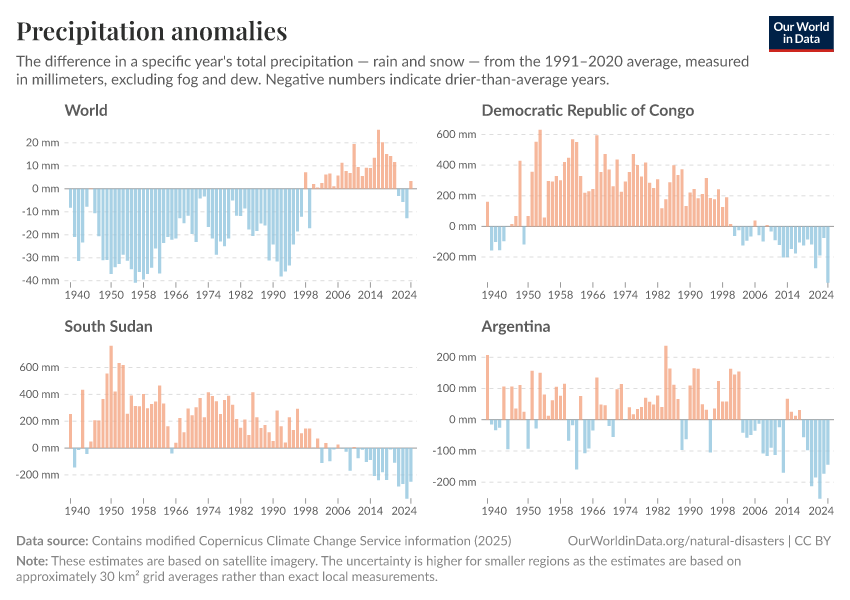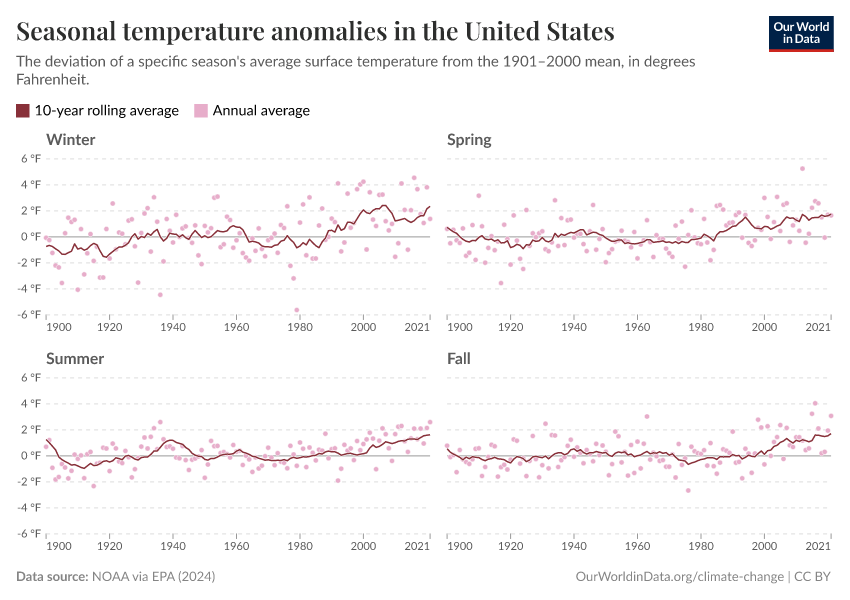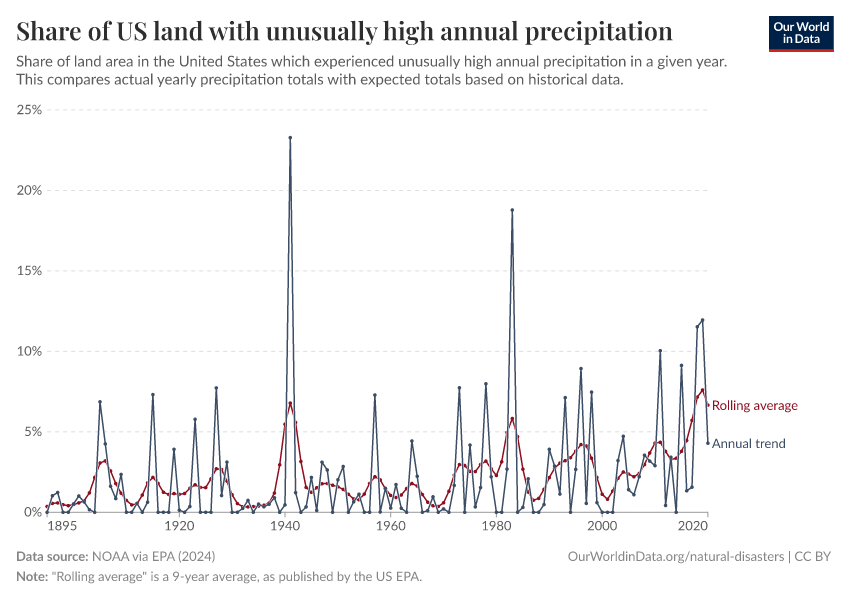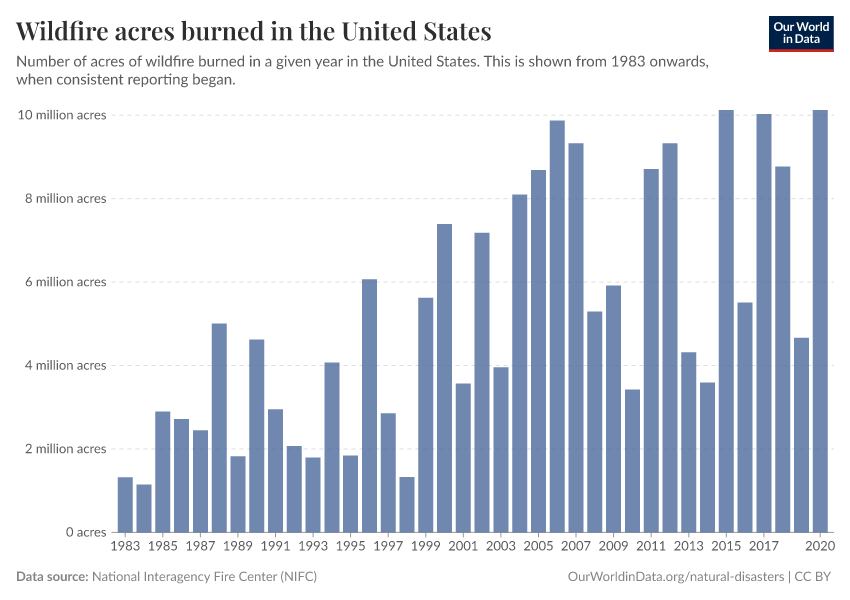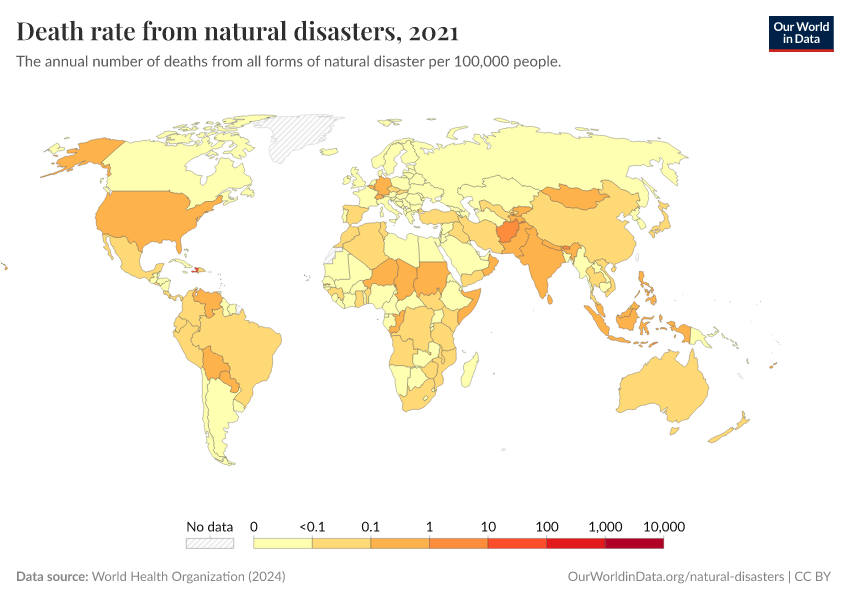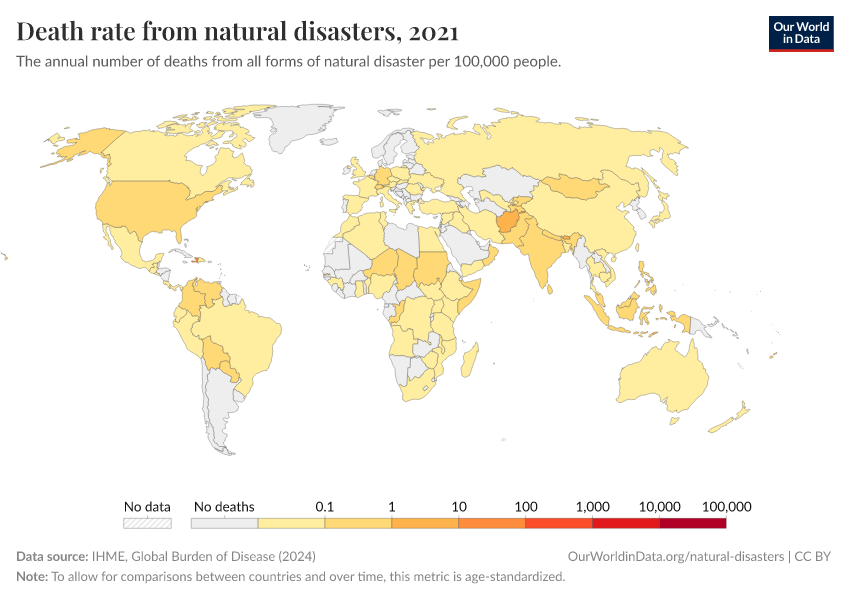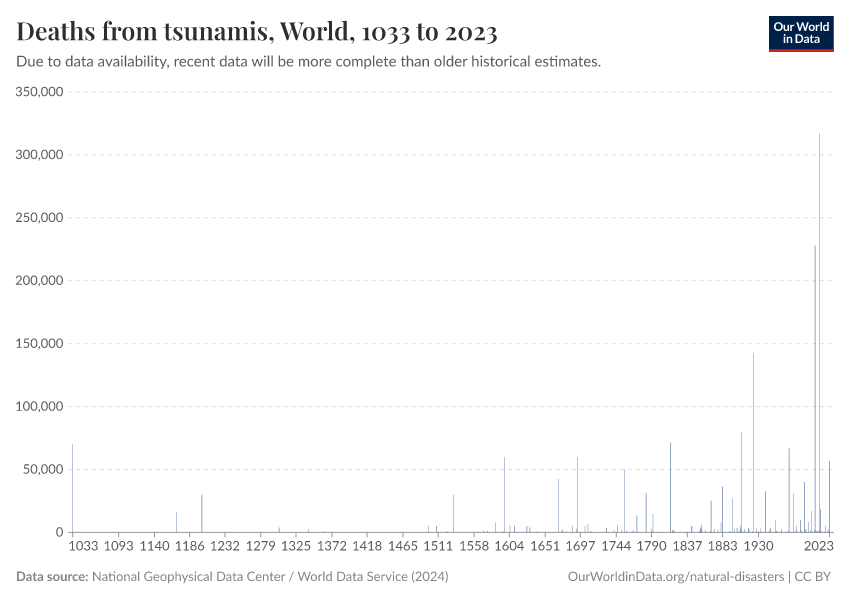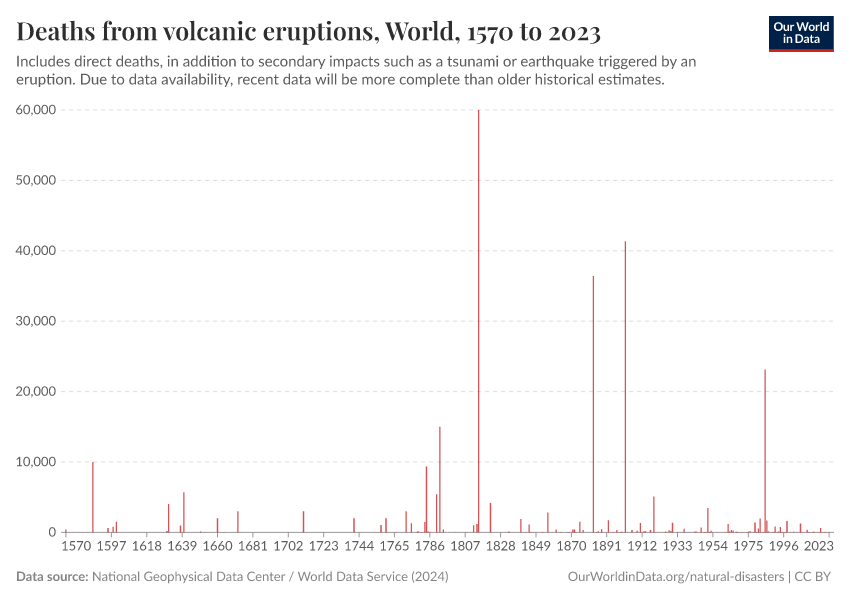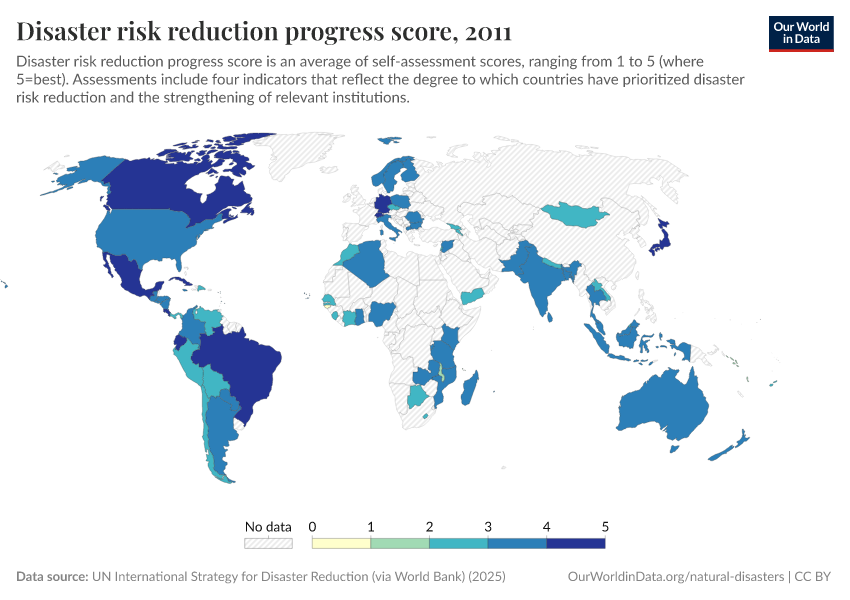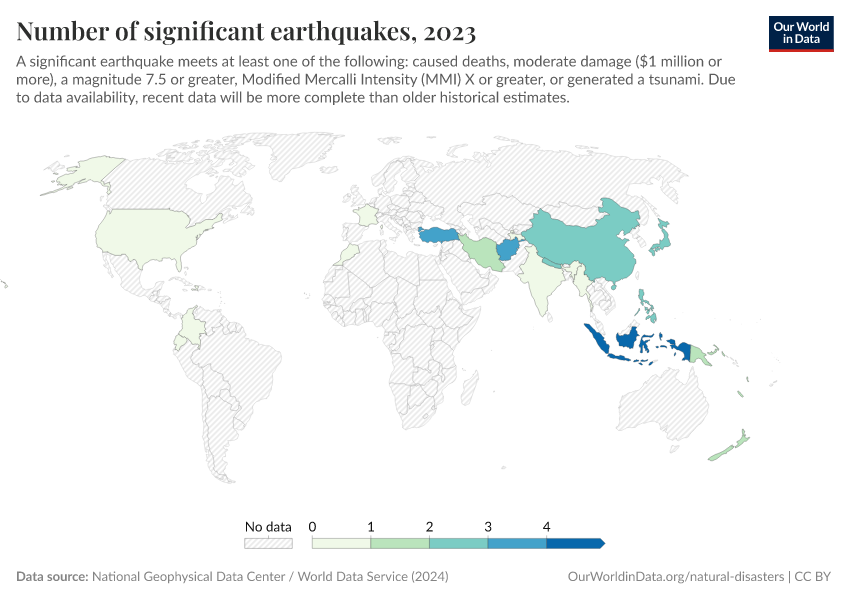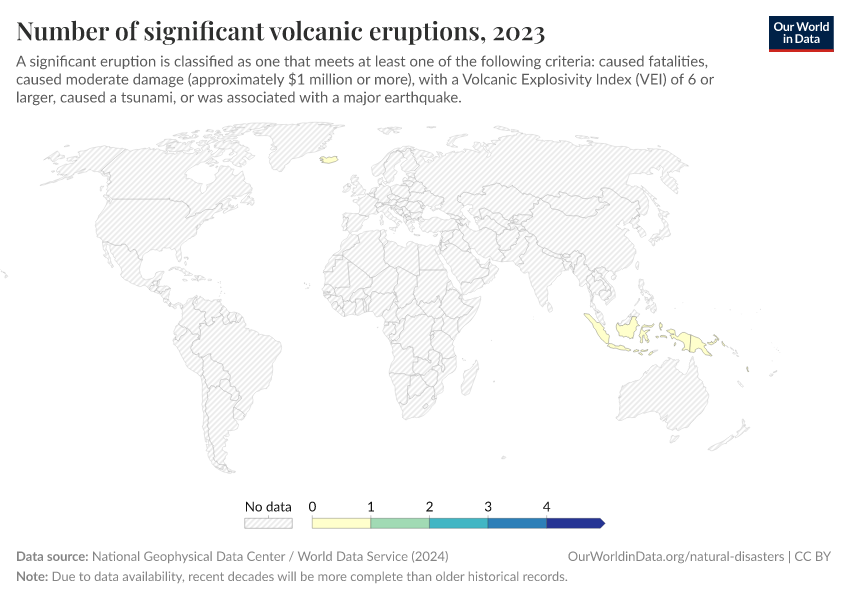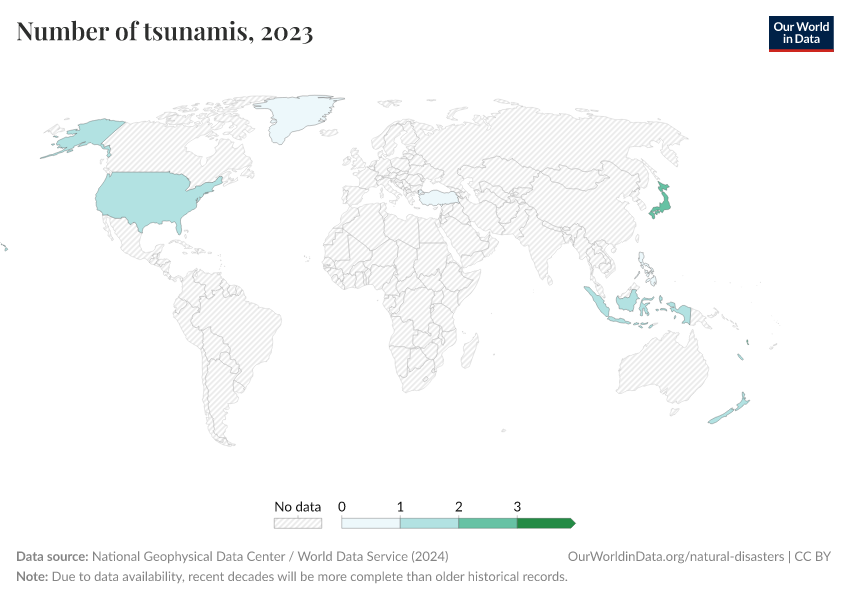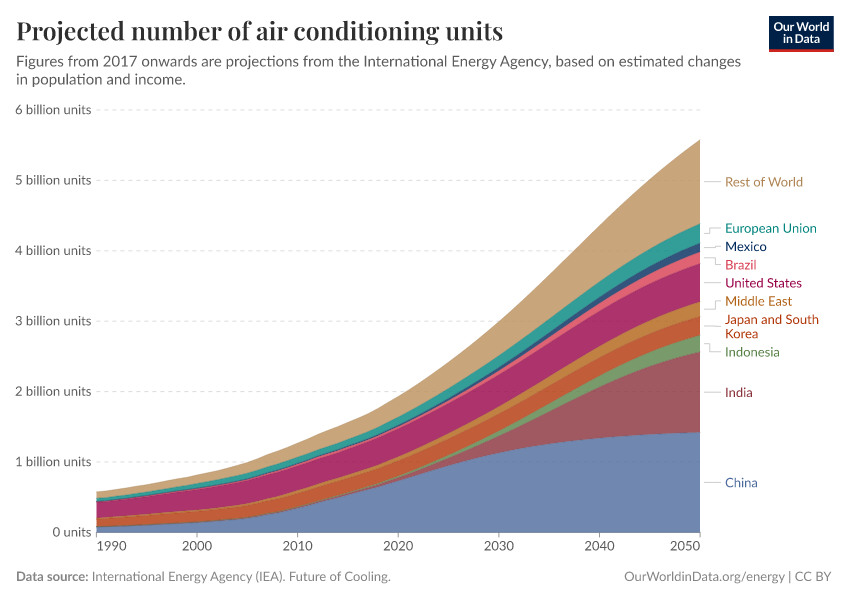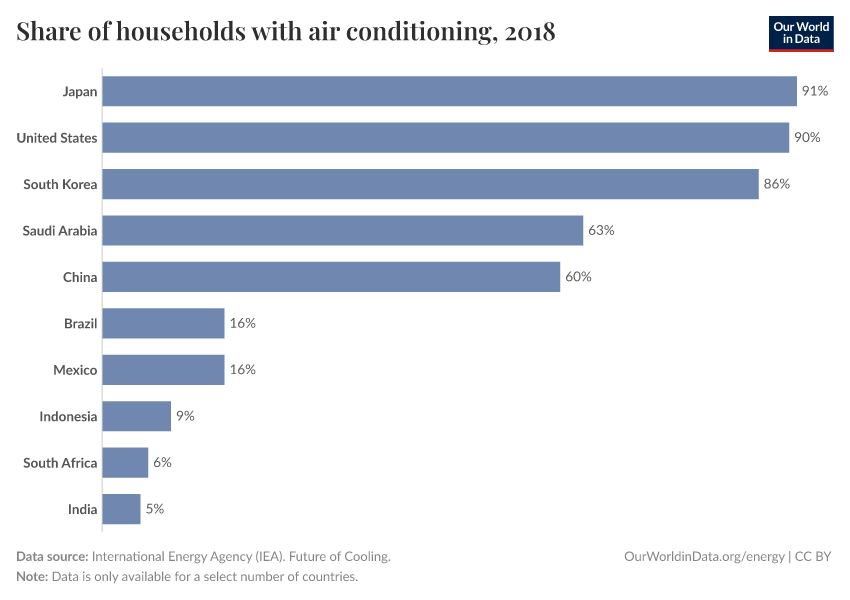Natural Disasters
How many people die from disasters, and how are these impacts changing over time?
Disasters – from earthquakes and storms to floods and droughts – kill approximately 40,000 to 50,000 people per year. This is the average over the last few decades.
While that’s a relatively small fraction of all deaths globally, disasters can have much larger impacts on specific populations. Single extreme events can kill tens to hundreds of thousands of people. In the 20th century, more than a million deaths per year were not uncommon.
Disasters have other large impacts, too. Millions of people are displaced – some left homeless – by them each year. And the economic costs of extreme events can be severe, and hard to recover from. This is particularly true in lower-income countries.
We are not defenceless against disasters: deaths from disasters have fallen significantly over the last century as a result of early warning systems, better infrastructure, more productive agriculture, and coordinated responses.
As climate change increases the risks of more extreme events, making societies even more resilient will be crucial to prevent our recent progress from reversing. To do so, we need to understand how disaster events are changing, who is most vulnerable, and what can be done to protect them.
On this page, you will find our complete collection of data, charts, and research on natural disasters and their costs.
Research & Writing
May 20, 2024
The world has become more resilient to disasters, but investment is needed to save more lives
Deaths from disasters have fallen, but we need to build even more resilience to ensure this progress doesn’t reverse.
March 12, 2024
Weather forecasts have become much more accurate; we now need to make them available to everyone
A four-day forecast today is as accurate as a one-day forecast 30 years ago.
June 03, 2024
Is the number of natural disasters increasing?
A deep dive into missing data and the limitations of disaster databases.
Articles on natural disasters
Key Charts on Natural Disasters
See all charts on this topicCite this work
Our articles and data visualizations rely on work from many different people and organizations. When citing this topic page, please also cite the underlying data sources. This topic page can be cited as:
Hannah Ritchie, Pablo Rosado, and Max Roser (2022) - “Natural Disasters” Published online at OurWorldinData.org. Retrieved from: 'https://ourworldindata.org/natural-disasters' [Online Resource]BibTeX citation
@article{owid-natural-disasters,
author = {Hannah Ritchie and Pablo Rosado and Max Roser},
title = {Natural Disasters},
journal = {Our World in Data},
year = {2022},
note = {https://ourworldindata.org/natural-disasters}
}Reuse this work freely
All visualizations, data, and code produced by Our World in Data are completely open access under the Creative Commons BY license. You have the permission to use, distribute, and reproduce these in any medium, provided the source and authors are credited.
The data produced by third parties and made available by Our World in Data is subject to the license terms from the original third-party authors. We will always indicate the original source of the data in our documentation, so you should always check the license of any such third-party data before use and redistribution.
All of our charts can be embedded in any site.
